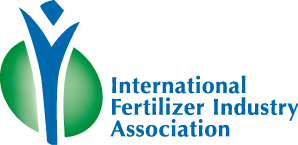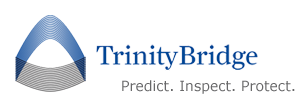IFA Technical Conference
New Orleans, Louisiana, USA
Industry Association
Tel. +33 1 53 93 05 00 - Fax +33 1 53 93 05 45/47

International Fertilizer




1-4 October 2000







- Secretariat: 28 rue Marbeuf - 75008 Paris - France
- ifa@fertilizer.org - www.fertilizer.org
1
Risk Based Inspection Prioritization Applied to an Ammonia Plant
Lily Sweet*, Lynne C. Kaley**, Ricardo R. Valbuena***, Alan Warnock
Det Norske Veritas, USA
A la suite des succès dans l'application d'une approche basée sur le risque à l'exploitation de
l'équipement dans l'industrie du raffinage et de la pétrochimie, une inspection basée sur le
risque (RBI) a été effectuée dans une unité d'ammoniac. Les unités d'ammoniac expérimentent
des mécanismes de dommage tels que l'attaque par l'hydrogène à haute température dans la
section reforming et les sections de "shift conversion", le cracking avec effort de corrosion à
l'amine, et réduction du CO2 dans la section absorption/régénération de CO2 et la corrosion
externe sous insolation. Ces mécanismes de dommage ainsi que d'autres comme la fracture
due à la fragilité ont été utilisés pour déterminer la probabilité d'une défectuosité dans une pièce
de l'équipement. Cette information, combinée à une analyse de conséquence à servi à quantifier
le risque pour chaque pièce de l'équipement. La priorité au risque à permis à l'usine de
déterminer le niveau optimum d'inspection ou l'efficacité de l'inspection nécessaire pour
maintenir le risque couru par l'équipement à son niveau actuel à mesure que l'équipement vieillit
ou de réduire le risque subi par l'équipement si le présent niveau de risque est inacceptable.
L'analyse pour l'usine de Ince a été un succès en ce sens qu'elle a confirmé les parties
principales de l'usine posant problème et confirmé que les inspections effectuées dans le passé
étaient efficaces. Certaines parties de l'équipement ont été identifiées comme à haut risque à
l'examen et nécessitant une inspection supplémentaire le prochain examen. D'autres parties ont
été identifiées comme à risque limité et, en conséquence, le plan d'inspection sur ces parties
sera réduit ou les intervalles d'inspections seront allongés. L'usine sera capable d'augmenter la
sécurité de l'unité en minimisant le risque par un emploi judicieux des fonds d'inspection. Les
économies de coûts d'inspection et de maintenance associés ont été estimées à $ 237.500 pour
un retour sur investissement (RDI) de 5:1. Les économies annualisées ont été estimées à
$ 47.500 égale à une réduction de 5% du budget de maintenance et d'inspection.
Abstract
Following successes in applying a risk based approach to equipment management in the
refining and petrochemical industry, a risk based inspection (RBI) assessment was performed in
an ammonia plant. Ammonia plants experience damage mechanisms such as high temperature
hydrogen attack in the reforming section and shift conversion sections, amine stress corrosion
cracking and CO2 thinning in the CO2 absorption/regeneration section and external corrosion
under insulation. These damage mechanisms along with others such as brittle fracture were
used to determine the likelihood of failure for equipment items. This information combined with a
consequence analysis was used to quantify risk for each piece of equipment. Risk prioritization
enabled the plant to determine the optimum level of inspection or inspection effectiveness
required to maintain the risk of equipment at its present level as the equipment ages or to
reduce the risk of equipment if the present level of risk is unacceptable. The ince ammonia plant
assessment was successful in that it confirmed the plant’s major areas of concern and
confirmed that the inspections performed in the past were effective. Some equipment items were
identified as high risk by the assessment and will require additional inspection during the next
______________________________________________________________________________________________________
E-mail :* lily.sweet@dnv.com

**lynne.kaley@dnv.com


*** ricardo.valbuena@dnv.com
2
turnaround. Other items were identified as low risk and as a result, the inspection scope on
these items will be reduced or their inspection intervals will be extended. The plant will be able
to increase the safety of the unit by minimizing the risk through effective use of its inspection
funds. The inspection and associated maintenance cost savings were estimated at $237,500 for
a Return on the Investment (ROI) of 5:1. The annualized savings were estimated at $47,500,
which equated to a 5% reduction of their maintenance and inspection budget.
1. INTRODUCTION
This paper describes a project that was conducted in an ammonia plant. The goal of the project
was to increase the safety of the plant by minimizing the risk. Risk Based Inspection (RBI) was
used to achieve this objective by optimizing the inspection plans. By evaluating the likelihood of
a failure and the potential consequences (i.e. the risks) in the fixed equipment and associated
piping, inspection plans were developed to minimize operating risks. RBI offers a tool to
evaluate the present risk of a plant based on past inspection history, process operating
conditions and fluids, and damage mechanisms active in the plant. The present risk can then be
forecast into the future and inspection, new metallurgy, new design or other mitigation efforts
can be directed to the equipment items, which present the greatest risk.
The RBI methodology has been in development since the early 90’s as a response to a desire
by companies in the refining and petrochemical industry to develop risk based prioritization and
management systems. The API RBI methodology, used in this study, was developed as an
industry-sponsored project under the direction of the American Petroleum Institute (API). This
methodology has gained acceptance in the refining industry during the past 3 years and more
recently in other sectors of the petrochemical and chemical industries.
METHODOLOGY
In general, the RBI methodology can be qualitative or quantitative. The qualitative methodology
is generally used to quickly prioritize various operating units or sections of plants based on risk
and to identify the high risk systems. A more detailed analysis using a quantitative methodology
can be applied to the higher risk units or sections of plants. In this way time and effort are
directed to gathering data for higher risk items. The quantitative method prioritizes equipment,
typically including piping, by calculating likelihood and consequence values for every piece of
equipment in the system.
Quantitative Analysis
The Ammonia plant chose to apply the quantitative method. The systems included in the
prioritization were the desulfurization reactors, primary and secondary reformers, CO shift
converters, CO2 absorption, methanator, and NH3 synthesis. Fixed equipment and piping were
included in the analysis. The project began with the collection of process, equipment and other
information from the plant management database, PFDs, P&IDs, material balances, and
inspection records. Each equipment item within the plant was evaluated with regard to likelihood
of failure, consequence of failure and remaining life. The consequence and likelihood for each
scenario were combined to obtain the risk. Both current and future risk were estimated and used
to develop the risk prioritization.
3
Likelihood of Failure Analysis
The likelihood of failure is dependent on the environment/material interaction, actual design
data, operational history, experience with this or similar services, etc. Figure 1 illustrates the
different elements of this analysis. During this phase of the analysis potential damage
mechanisms are identified and past inspection histories are gathered to identify active damage
mechanisms and measured damage rates. The analysis is done using the systematic approach
and methodology developed, as outlined in the API Base Resource Document on Risk Based
Inspection (API 581) [1]. The information is analyzed using different “Technical Modules” which
are a systematic method used to assess the effect of specific failure mechanisms on the
likelihood of failure. The following damage mechanisms are available in the methodology.
• External corrosion i.e. general or localised atmospheric corrosion, corrosion under insulation
(CUI) etc and external cracking for austenitic stainless steels.
• Internal corrosion i.e. general and localised corrosion in various environments (hydrocarbons
containing water, sea water, water-injection systems, amine treating, CO2, hydrochloric-,
sulfuric-, and hydrofluoric acids)
• Stress corrosion cracking in various environments (caustic, amine, chlorides, H2S, etc.)
• High temperature phenomena (oxidation, hydrogen attack, thermal fatigue)
• Fatigue caused by vibration and flow effects (slugging/choking)
• Brittle fracture (low temperature/low toughness fracture, temper embrittlement, 885 degree
embrittlement, and sigma phase embrittlement)
The damage mechanisms of particular concern in the ammonia plant study included external
corrosion, corrosion under insulation, high temperature oxidation, high temperature hydrogen
attack, carbonic acid thinning and amine cracking. Each of these damage mechanisms is
handled by a Technical Module presently in the software.
The calculation method for likelihood of failure associated with the failure mechanisms is based
on Structural Reliability Analysis (SRA) [2], where the stochastic uncertainty in the basic
variables, in particular the uncertainty in the determination of the damage rate and the inspection
effectiveness, are taken into account. An important feature of this theory is its ability to include
both the prior damage estimates and the outcome from the inspections in the derivation of the
updated posterior likelihood of failure (Bayes’ Theorem).
The level of information gained from an inspection depends heavily on the quality and extent
(coverage) of the inspection carried out. The inspection quality is modeled either by discrete
probabilities for the inspection effectiveness for the inspection method applied.
Consequence Analysis
A simplified consequence modelling methodology is applied, similar to that used in a traditional
Quantitative Risk Assessment. The methodology is based on an event tree approach and uses
pre-simulated effect-scenarios to simplify the calculational time required for analysis. The
following factors are considered in the consequence calculation: fluid type and phase, toxicity,
inventory available for release and type of leak (leak/rupture). The consequence effects are
reported as four main consequence categories, as follows:
4
• Flammable events (fire/explosion resulting in personnel injury and equipment damage)
• Toxic releases (personnel injury)
• Environmental risks (cost of environmental clean-up)
• Business interruption (lost/deferred production) and asset repair after failure
The consequence of flammable and toxic events are typically used to calculate risk based on
personnel safety and equipment damage. Another method of measuring consequence is
financial. Cost data related to lost production, outage, asset repair, adjacent repair and
environmental clean-up are used to calculate financial risks.
2. RISK RANKING
Risk is a function of likelihood and consequence of failure. In a RBI analysis, each of
consequence and likelihood of failure are categorized in 5 groups giving a total of 25 risk
combinations. A risk matrix is an effective way of representing the risk combinations. Each
piece of equipment can be placed on the matrix. It allows comparison of plant risk at a given
point in time and helps prioritise the risk reduction efforts for different levels of risk (Figure 2).
The consequence of failure was reported in two main categories; one related to personnel safety
and one related to economic losses. A target level of acceptable risk, or risk criteria, was
determined. The acceptable level of risk was used to determine an acceptance line in the risk
matrix. For components above the acceptance line, steps were taken to reduce the risk. For
components below the acceptance line, other options exist such as using the financial risk to
optimize the risk reduction effort. This risk matrix was used to direct inspection/maintenance
planning as described in the next section. Performing inspection reduces likelihood of failure.
Reduction of the consequence was limited to reduction by improved detection and mitigation
systems.
3. RISK BASED INSPECTION PLANNING
RBI planning involves focusing the inspection efforts in order to reduce risk of failure. Therefore,
an essential part of RBI planning is to establish the most cost-effective approach of satisfying
the failure acceptance or acceptable likelihood of failure criteria. The key to RBI planning is to
use the method of probabilistic inspection updating, as a central part of the RBI concept. The
methodology to establish the inspection interval is based on selected combinations of inspection
methods i.e. inspection effectiveness, number of inspections and inspection intervals that can
ensure that the risk (area or financial risk) is reduced by a certain factor depending on the
location in the Quantitative Risk Matrix, as shown in Figure 3. Part of the likelihood of failure
analysis involves assigning levels of effectiveness for past inspections. The effectiveness of the
inspection methods to detect the damage mechanisms is evaluated and characterised based on
five inspection effectiveness categories: Highly effective, Usually effective, Fairly effective,
Poorly effective and Ineffective. Assignment of categories is based on professional judgement
and expert opinion. These categories are applied during the RBI planning. The starting point to
evaluate different inspection programs is to calculate the likelihood of failure for the different
damage states, accounting for the previous inspection results and the maintenance history of
the equipment.

